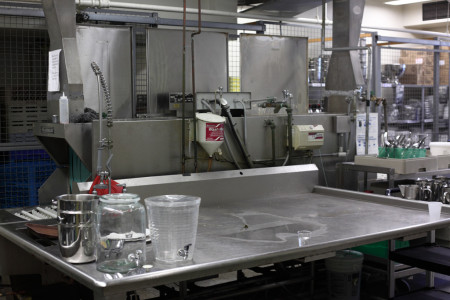Month: August 2013
Brothers about
“Do not enter” hatchway
Elizabeth May and Adria Vasil panel on “Do The Math” movie
Tickets to both shows of Toronto350.org’s October 15th “Do the Math” screening are available for free via Eventbrite.
[Update: 3 September 2013] There is now a Facebook event as well.
Dishwashing equipment
Note highly inconsistent instructions regarding neighbours
Basement spiral staircase
Wheels spinning
Things are not progressing well on my paper for the 31st. I am a bit burned out from my comp on the 22nd, and neither the humidity nor my lack of a proper base of operations is conducive to productivity.
I will need to force myself to grind away at it tomorrow, as the rest of tonight is tied up with the Toronto350.org end-of-month potluck and planning meeting.
“Members only” door
The Economist on China and climate change
Some important and sobering information from a recent article:
China’s impact on the climate, though, is unique. Its economy is not only large but also resource-hungry.
…
The country’s energy use is… gargantuan. This is in part because, under Mao, the use of energy was recklessly profligate. China’s consumption of energy per unit of GDP tripled in 1950-78—an unprecedented “achievement”. In the early 1990s, at the start of its period of greatest growth, China was still using 800 tonnes of coal equivalent (tce, a unit of energy) to produce $1m of output, far more than other developing countries. Energy efficiency has since improved; China used 390tce per $1m in 2009. But that was still more than the global average of 300tce and far more than Germany, which used only 173tce.
Despite a huge hydroelectric programme, most of this energy comes from burning coal on a vast scale. China currently burns about half the world’s supplies. In 2006 it surpassed America in carbon-dioxide emissions from energy. By 2014 or 2015 it will emit twice America’s total. Between 1990 and 2050 its cumulative emissions from energy will amount to some 500 billion tonnes—roughly the same as those of the whole world from the beginning of the industrial revolution to 1970. And the total is what matters. The climate reacts to the stock of carbon, not to annual rises.
These emissions are adding to a build-up of carbon already pushed to unprecedented heights by earlier industrialisations. When Britain began the process in the 18th century, the atmosphere’s carbon-dioxide level was 280 parts per million (ppm). When Japan was industrialising fastest in the late 1950s, it had risen a bit, to 315ppm. This year the level hit 400ppm. Avoiding dangerous climate change is widely taken to mean keeping below 450ppm, although there are significant uncertainties surrounding this figure. At current rates that threshold will be reached in 2037. China is likely to be the largest emitter between now and then.
About a quarter of China’s carbon emissions is produced making goods for export. If the carbon embodied in those goods were marked against the ledgers of the importing countries China would look a little less damaging, the rich world a lot less virtuous. But even allowing for that, China is not playing catch-up any more. It is doing more damage to the stability of the global climate than any other country.
The claim that stabilizing the atmospheric concentration at 450 ppm will be enough to keep temperature increases below 2˚C is dubious. In James Hansen et al. “Target Atmospheric CO2: Where Should Humanity Aim?“, they conclude that: “If humanity wishes to preserve a planet similar to that on which civilization developed and to which life on Earth is adapted, paleoclimate evidence and ongoing climate change suggest that CO2 will need to be reduced from its current 385 ppm to at most 350 ppm”.
Doing that would require much more aggressive action than what this article suggests.






